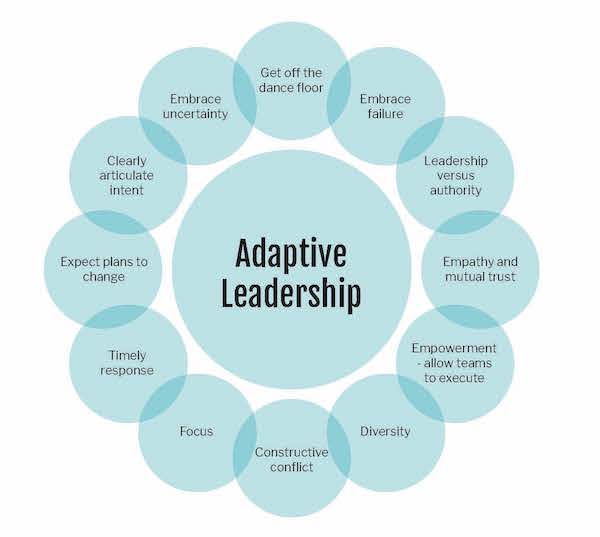In my last series of blogs, I explored the “Give It Up” model whereby true leaders need to move from a command and control style of leadership and towards one of delegation and trust.
Not only do leaders need to give up control, they need to become adaptive leaders and be able to chart a course when they cannot predict the outcome of their choices.
The adaptive leader
Today, every organization is an information business. Leaders need to be able to read the right signals and act upon them.
Adaptive leadership is knowing what to do when you don’t know what to do. Adaptive leaders learn through experimentation and manage the context, not the instruction set. They cultivate a diversity of views to generate a wealth of options. They lead with trust and respect and provide autonomy.
In keeping with my soccer analogy. Just as a soccer manager or coach understands that when change is constant, they have to be able to sense, respond, and act rapidly to stay ahead of the game, leaders in organizations have to do the same.
Soccer is constantly changing and evolving and the rate of evolution is increasing. Managers, coaches, and players may adopt the winning tactics of other teams or come up with opposing tactics to topple the opposition.
Only last year (2017), the English Premier League was responsible for the emergence of the ‘back three’ formation, the 3–4–3 (or, sometimes the 3–4–2–1), which plays with three dedicated defenders rather than the traditional four. Chelsea manager Antonio Conte had always favoured playing three defenders, but after his team was thumped 3–0 by Arsenal, he made the leap. Chelsea went on to win 13 consecutive league matches, during which time it only conceded four goals.
Other teams have adopted the formation including West Ham, Borussia Monchengladbach, Palermo, and Genoa. But each 3–4–3 is different to the other as managers and coaches adapt the formation to reflect the strengths and weakness of the players.
None of this, however, is new. Many managers, over the years, have experimented with the 3-4-3 formation illustrating how they continually adapt to changing conditions and increased competition. It was used in the late 1990s at Milan and at Liverpool in 2012 under Brendan Rodgers whose team struggled against the 4–2–3–1formation of Basel. Following a 1–0 defeat, Rodgers responded with the 3–4–2–1 formation.
Leaders in organizations have to adapt continually to the changing conditions if they want to stay ahead of the game.
My Adaptive Leadership Model below illustrates what a leader has to undertake to become an adaptive leader.

Game score
Leadership in the face of volatile, uncertain, complex, and ambiguous change has to be adaptive.
Adaptive leaders need to know when to operate in the fray, and when to get off the field and watch from the sideline.
They will embrace losing a game as a learning opportunity and the team will bounce back ready to play the next game. They will have empathy and be able to walk in another’s shoes to understand their perspective. Players are inspired to be accountable and make decisions.
Adaptive leaders expect and embrace change. It is their reality. The teams they build are dynamic and embrace change, and they channel any uncertainty into positive outcomes through collaboration and communication.
Adaptive leaders clearly articulate their intent and then let the players get on with the game. The players will ultimately win or lose the game.
In subsequent posts in this series, I will be exploring the additional elements of the Adaptive Leadership model.
Article by channel:
Everything you need to know about Digital Transformation
The best articles, news and events direct to your inbox
Read more articles tagged: Featured, Leadership







